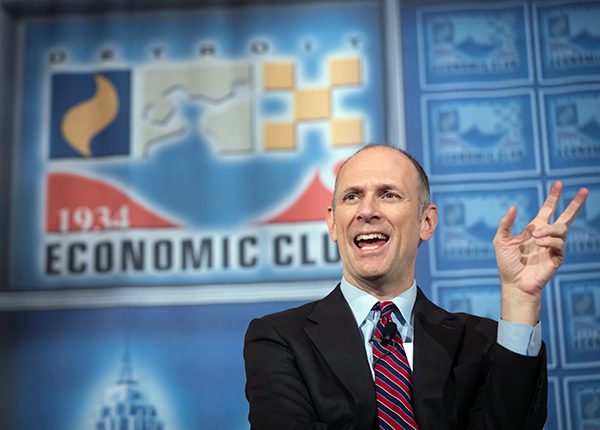
Federal Reserve officials were encouraged to see the 2.3% inflation rate in April over last year, but apparently not enough to consider lowering the Fed’s prime interest rate just yet.
Austan Goolsbee, the president of the Federal Reserve Bank of Chicago and a voting member of the committee that sets the interest rate, told the USA Today this week the Fed needs to see “a lot more” drops like it before seriously thinking about further rate cuts.
“It’s a benign report,” Goolsbee told USA Today. “That’s comforting.”
Goolsbee told the outlet the April inflation reading, along with President Donald Trump’s decision to pause tariffs on China for 90 days, offer a potentially brighter inflation outlook that could perhaps set the stage for rate cuts.
But, he said, “When you have things that you know are coming down the pipe, we’ve just got to be more wary.”
The Fed next meets June 17 through June 18.
Fed Chair Jerome Powell has likewise indicated longer-term interest rates are likely to stay higher because of the risk of a rise in inflation.
Among other things, it could be a signal that homebuyers probably shouldn’t expect much of a break.
At a conference in Washington, DC, on Thursday, Powell hinted policymakers are revising their view of longer-term interest rates upward, and that a return to near-zero rates is unlikely barring a recession, according to a report on Realestate.com.
“Many estimates of the longer-run level of the policy rate have risen, including those in the summary of economic projections,” said Powell, according to the site, referring to the “dot plot” of rate forecasts issued by Fed policymakers.
“Higher real rates may also reflect the possibility that inflation could be more volatile going forward than in the inter-crisis period of the 2010s,” when the federal funds rate topped out at 2.5%, he added.
The Fed has held its benchmark rate steady at an upper limit of 4.5% since December, during which time mortgage rates have remained in a narrow range from 6.6% to 7%.





